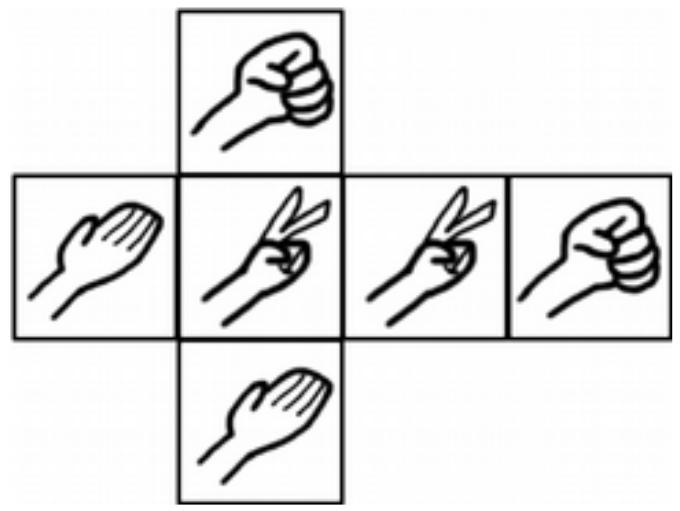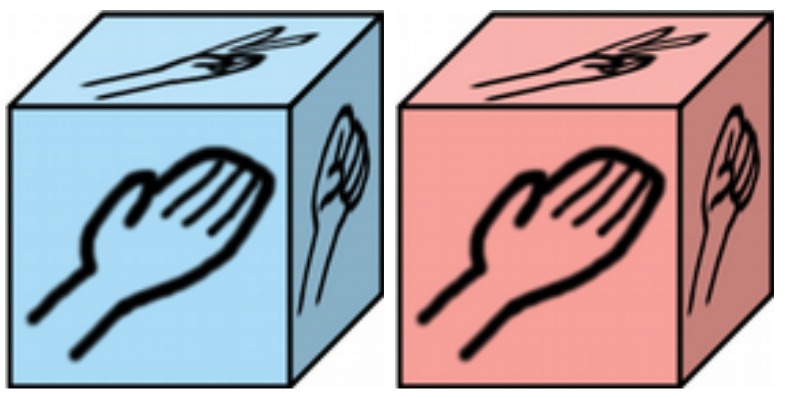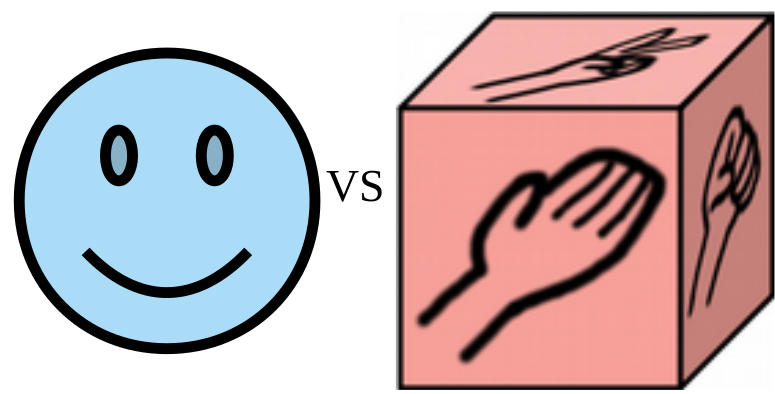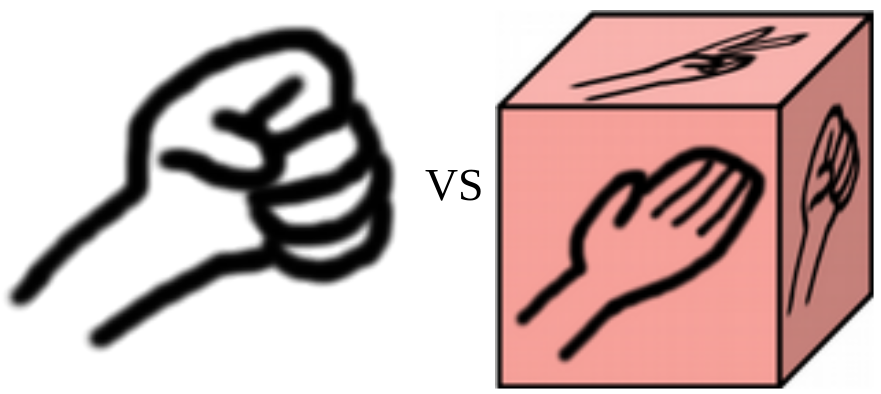How to become a master in RoShamBo?
This text will teach you in a few minutes how to become a true master in the game RoShamBo


In this two player game, both choose between Rock, Paper or Scissors at the same time. If choosing equal generates a tie, in other cases we obey the following criteria:
Rock wins from Scissors;
Scissors wins Paper;
Paper wins Rock.
In a first analysis we can observe that the relation of this game does not obey the distributive property of mathematics (z> x, x> y, then z> y). Because Rock wins from Scissors, Scissors wins from Paper, so Rock should win from Paper … but this is false! Thus, analyzing the Rock, Paper and Scissors system, we have five interaction configurations (we will call players Blue and Red).
1. Both players choose one option at random. In this case, we can imagine the faces of a conventional die as each option (Rock = 1-2, Paper = 3-4, Scissors = 5-6). Thus, victory, defeat or draw will be equally likely for both players.

Although this game seems totally random, we need to note that the factors that produce uncertainty in people are the main characteristics of all types of interactions between players, and not typical of games. For, considering only games as logical systems, the victory in Rock, Paper e Scissors should be arbitrary if players do not try to anticipate their opponents’ decisions.

2. The Blue player tries to predict the actions of the Red player, the Red player plays randomly. In a similar way to the previous case, we can imagine the Blue player’s choices as someone trying to predict the outcome of an honest 6-sided die. This certainly leads the Blue player to an illusory reasoning, since the dice is arbitrary, so each throw is independent of the previous result. In the attempt of the Blue player to try to predict the random, the Red player will have a greater chance of victory.

3. The Blue player plays from a pattern that is independent of the Red player, who plays randomly. We can imagine the choices of the Blue player as someone who constantly plays “Rock” regardless of what the Red player does. In this case, this also leads to a result of victory, defeat or tie that is equally likely between both players because the actions of neither depend on the result of the other. Equivalent to case 1.

4. The Blue player plays from a pattern that is independent of the Red player, who plays trying to predict the actions of the Blue player. As we can see, in this case the presence of an independent pattern for the Blue player, favors the victory for the Red player if he can “decode” this pattern. In the case of repeatedly playing “Rock”, it would be an easily identifiable pattern, but if you play for example by associating Rock = 0-1-2-3, Paper = 4-5-6, Scissors = 7-8-9, to the digits decimals of π (3,141592 …), we have a pattern that is somewhat difficult to be identified, for example the first 5 moves given by the following structure shown in the figure below starting from the left.

5. Each player tries to predict the actions of the other. As we can see, this case favors the player who manages to be one step ahead of his opponent, taking the challenge to a situation known as “mind game” or “mental game”.

Note that being ONLY one step ahead in predicting behavior, guarantees the player the victory in the choice. However, being two or more steps ahead can lead the player to a wrong decision. In this case, each is trying to determine the other’s decision based on the observed behavior and results of the game. The Red player can assume that the Blue player after losing twice using Paper, decides to switch to Rock.
The Blue player can assume that the Red player will start using Scissors and then follow with Rock … and so on. Note that the “mental game” situation derives from the particular configurations of human behavior when conditions favor or not the players, something that is not always conscious. We can imagine that we are playing at random, but within us there is an intrinsic behavior that affects our choices. In that case, the player who is most adept at predicting ONLY the next step in the opponent’s behavior will have a greater chance of winning.
In this perspective, the real secret to being a master in Rock, Paper and Scissors, is to play in the least predictable way possible … but note, playing in a random way is different from playing with varying results … your head must work as a die, taking decisions without any basis or prior reason for this. It may seem simple but it is not. In Alberto Rojo’s book “El azar en la vida cotidiana” there is a famous random experiment in which a teacher asks a group of students to flip a coin 100 times and write down the results and for the other group to invent 100 results for the launch of a coin. After completing the two lists, without the teacher knowing which is which, deliver both. He then analyzes the amount of equal results in a row.
In the first list the equal results followed varied from 1 to 5. While in the second list the equal results followed varied from 1 to 8. With this the professor bets that the second list describes the coin’s launches and the first list was invented. Because it is unlikely in 100 releases we will not get more than 5 equal results in a row. That is, thinking in a truly random way is difficult.

